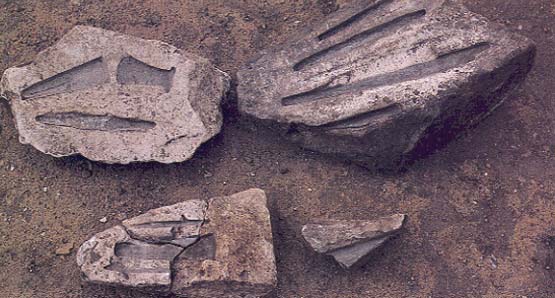Image Details

Courtesy Manfred Bietak and the Archaeological Institute of Austria
Limestone molds. In about 1740 B.C., metal workers at Tell el-Daba in the Eastern Nile Delta cast a variety of copper tools and weapons in these molds. In the stone at left, two chisels and an axe head are clearly outlined. The stone at right includes a knife, a saw and a chisel, and at bottom are two thin harpoons and an adze. Harpoons were used to catch fish and hippopotamus, a popular local dish.
The metal craftsmen at Tell el-Daba were Canaanites originating most likely from the area of Byblos, an eastern Mediterranean port with a long tradition of copper tool production. In the late Middle Kingdom (c. 1750–1700 B.C.), intensive trade linked the two harbor cities of Byblos and Tell el-Daba and led to the establishment of a major settlement of Byblites at Tell el-Daba. (The dates and interpretation used in this caption are those of the excavator of Tell el-Daba, Manfred Bietak.)
